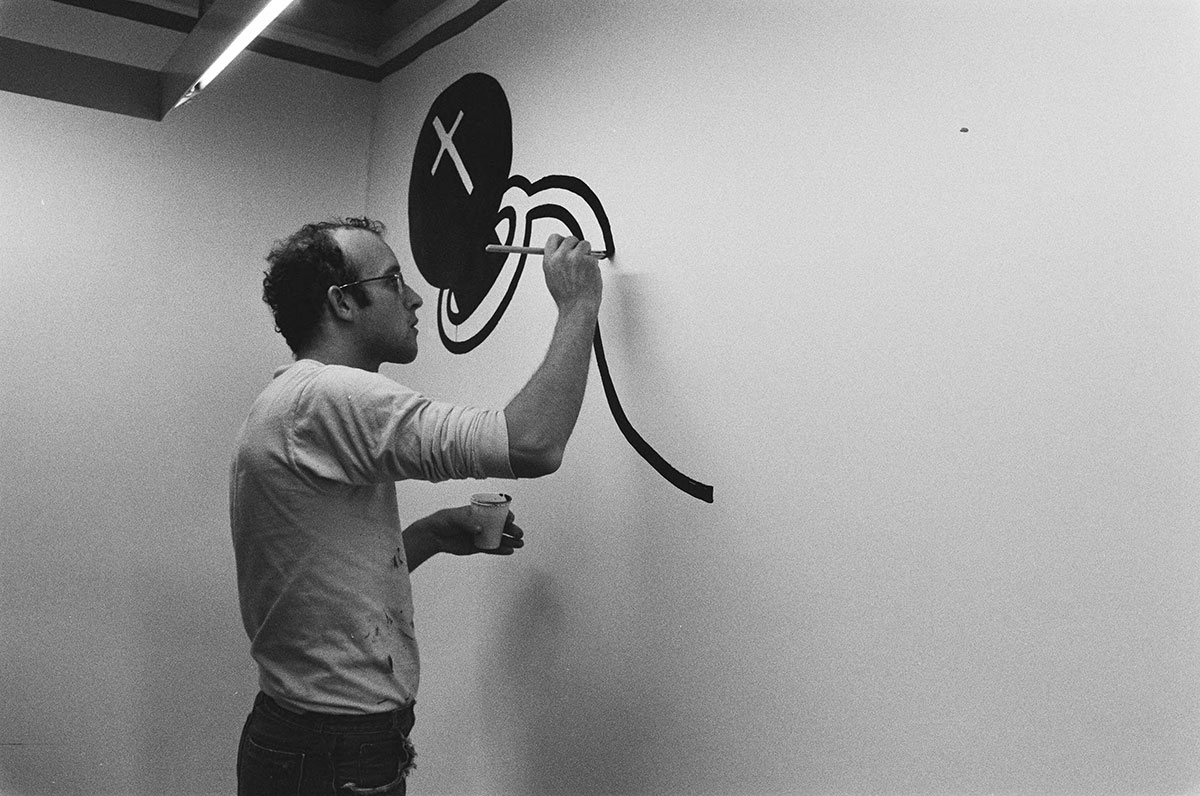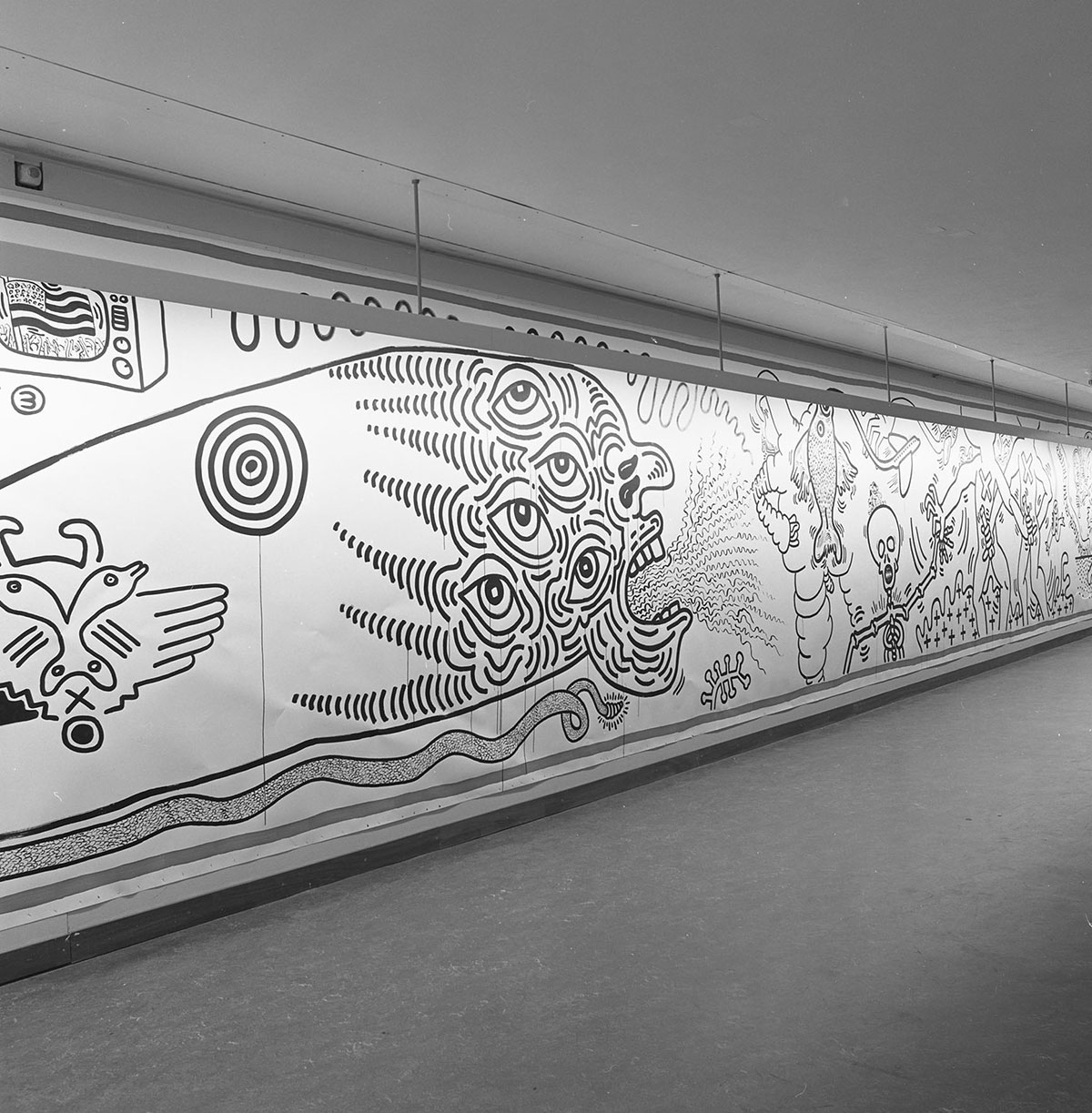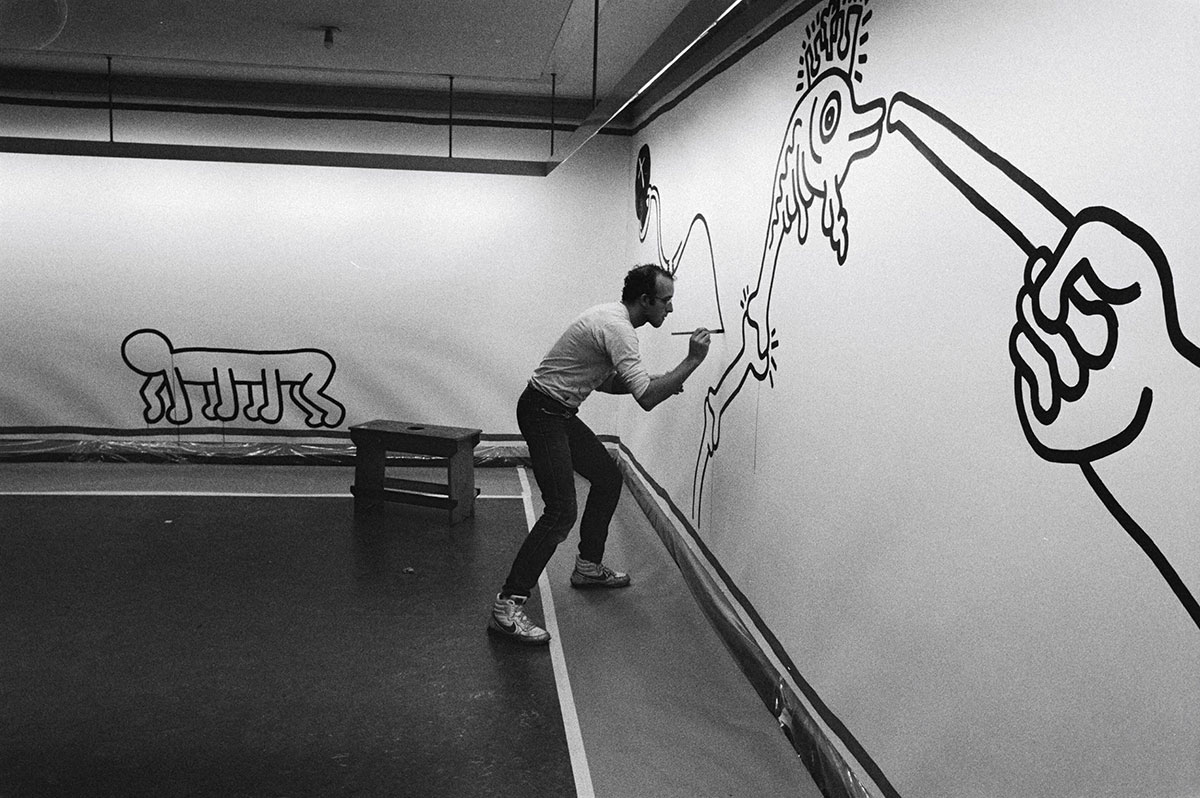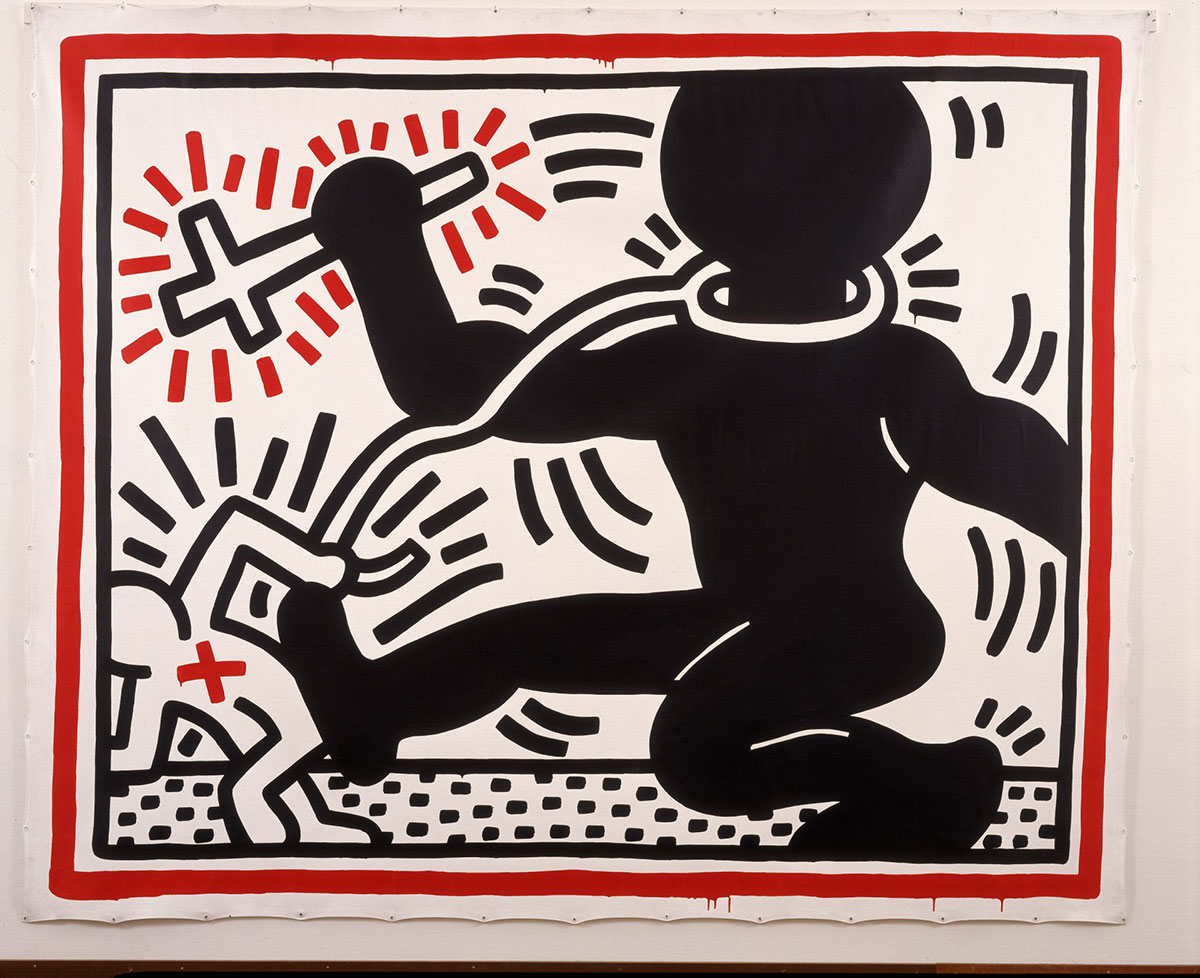ART CITIES: Amsterdam-Keith Haring
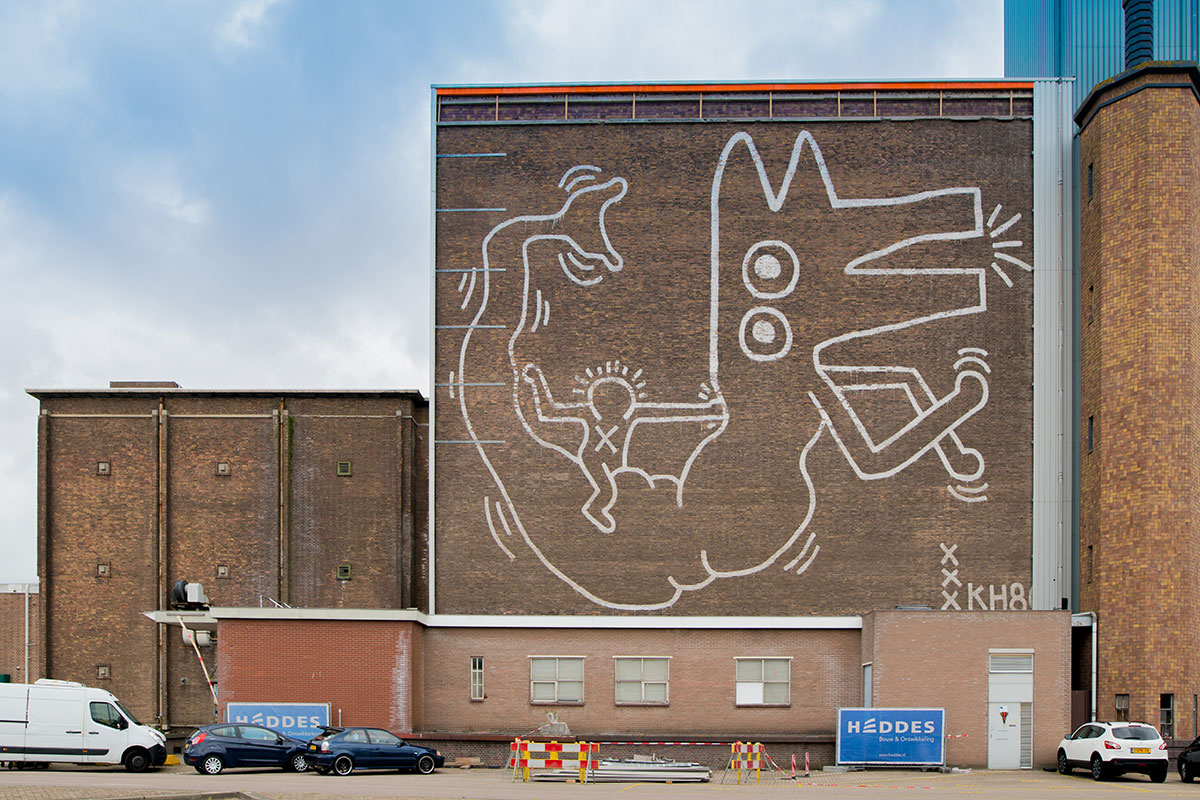 Keith Haring provided proof of the possibilities of using public sites that were not usually dedicated to art to share artistic and political messages to multiple audiences. He lent street art credibility and legitimacy and took it into fine art galleries and museums, inspiring a new generation of street-to-gallery artists. Along with his artist contemporaries Jean-Michel Basquiat and Kenny Scharf, Haring opened the field of possibility for how seemingly simple and even cartoony elements by self-taught or less-schooled artists might be appreciated.
Keith Haring provided proof of the possibilities of using public sites that were not usually dedicated to art to share artistic and political messages to multiple audiences. He lent street art credibility and legitimacy and took it into fine art galleries and museums, inspiring a new generation of street-to-gallery artists. Along with his artist contemporaries Jean-Michel Basquiat and Kenny Scharf, Haring opened the field of possibility for how seemingly simple and even cartoony elements by self-taught or less-schooled artists might be appreciated.
By Efi Michalarou
Photo: Stedelijk Museum
This summer, the Stedelijk Museum presents a unique drawing by artist and activist Keith Haring. “Amsterdam Notes” is one of his largest-ever museum pieces and unseen for almost three decades. Keith Haring made the 38.10-meter drawing that he titled “Amsterdam Notes” in 1986 for his first solo museum exhibition at the Stedelijk. When compared to Haring’s other work, the drawing is unique on several levels. The black ink drawing with red acrylic paint border is probably one of his largest museum pieces. He trades his iconic symbols of barking dogs, dancing figures and radiant babies for fanciful monsters and colossal animals. Among the fantastical creatures, human figures dance, make love, fly and leap. Yet, in contrast to the American’s trademark style, the composition is spatial, and does not fill the picture plane. The fish that appear in the drawing are probably a playful nod to Haring’s surname – which means “herring” in Dutch. The artwork shows us a different side of Haring, and marks his ascent to world fame. For the 1986 exhibition at the Stedelijk, the relatively unknown Keith Haring didn’t simply want to exhibit work he had already made, but wanted to create new artworks, one of which is “Amsterdam Notes”. He also painted a vast semi-transparent screen that was suspended above the historic grand staircase as a velum, and painted an enormous sea monster on the exterior of the Stedelijk Museum’s former art storage depot. After years of being hidden behind wall panels, the mural was finally revealed in 2018. Together with two other huge pieces from the collection, the drawing “Amsterdam Notes” is on display again in the place where Haring’s journey began.
Upon graduation from high school in 1976, Keith Haring enrolled in the Ivy School of Professional Art in Pittsburgh, a commercial arts school. He soon realized that he had little interest in becoming a commercial graphic artist and, after two semesters, dropped out. While in Pittsburgh, Haring continued to study and work on his own and in 1978 had a solo exhibition of his work at the Pittsburgh Arts and Crafts Center. Later that same year, Haring moved to New York City and enrolled in the School of Visual Arts (SVA). In New York, Haring found a thriving alternative art community that was developing outside the gallery and museum system, in the downtown streets, the subways and spaces in clubs and former dance halls. Here he became friends with fellow artists Kenny Scharf and Jean-Michel Basquiat, as well as the musicians, performance artists and graffiti writers that comprised the burgeoning art community. Haring was swept up in the energy and spirit of this scene and began to organize and participate in exhibitions and performances at Club 57 and other alternative venues. In addition to being impressed by the innovation and energy of his contemporaries, Haring was also inspired by the work of Jean Dubuffet, Pierre Alechinsky, William Burroughs, Brion Gysin and Robert Henri’s manifesto “The Art Spirit”, which asserted the fundamental independence of the artist. With these influences Haring was able to push his own youthful impulses toward a singular kind of graphic expression based on the primacy of the line. Also drawn to the public and participatory nature of Christo’s work, in particular “Running Fence”, and by Andy Warhol’s unique fusion of art and life, Haring was determined to devote his career to creating a truly public art. As a student at SVA, Haring experimented with performance, video, installation and collage, while always maintaining a strong commitment to drawing. In 1980, Haring found a highly effective medium that allowed him to communicate with the wider audience he desired, when he noticed the unused advertising panels covered with matte black paper in a subway station. He began to create drawings in white chalk upon these blank paper panels throughout the subway system.
Between 1980 and 1985, Haring produced hundreds of these public drawings in rapid rhythmic lines, sometimes creating as many as forty “subway drawings” in one day. This seamless flow of images became familiar to New York commuters, who often would stop to engage the artist when they encountered him at work. The subway became, as Haring said, a “laboratory” for working out his ideas and experimenting with his simple lines. In April 1986, Haring opened the Pop Shop, a retail store in Soho selling T-shirts, toys, posters, buttons and magnets bearing his images. Haring considered the shop to be an extension of his work and painted the entire interior of the store in an abstract black on white mural, creating a striking and unique retail environment. The shop was intended to allow people greater access to his work, which was now readily available on products at a low cost. The shop received criticism from many in the art world, however Haring remained committed to his desire to make his artwork available to as wide an audience as possible, and received strong support for his project from friends, fans and mentors including Andy Warhol. Throughout his career, Haring devoted much of his time to public works, which often carried social messages. He produced more than 50 public artworks between 1982 and 1989, in dozens of cities around the world, many of which were created for charities, hospitals, children’s day care centers and orphanages. Haring was diagnosed with AIDS in 1988. In 1989, he established the Keith Haring Foundation, its mandate being to provide funding and imagery to AIDS organizations and children’s programs, and to expand the audience for Haring’s work through exhibitions, publications and the licensing of his images. Haring enlisted his imagery during the last years of his life to speak about his own illness and generate activism and awareness about AIDS. Keith Haring died of AIDS related complications at the age of 31 on February 16, 1990.
Photo: Mural (1986) by Keith Haring on the Food Center Amsterdam in Amsterdam-West. Photo: Hanna Hachula. Keith Haring mural copyright © Keith Haring Foundation
Info: Stedelijk Museum, Museumplein 10, Amsterdam, The Netherlands, Duration: 26/5-5/11/2023, Days & Hours: Daily 10:00-18:00, www.stedelijk.nl/



